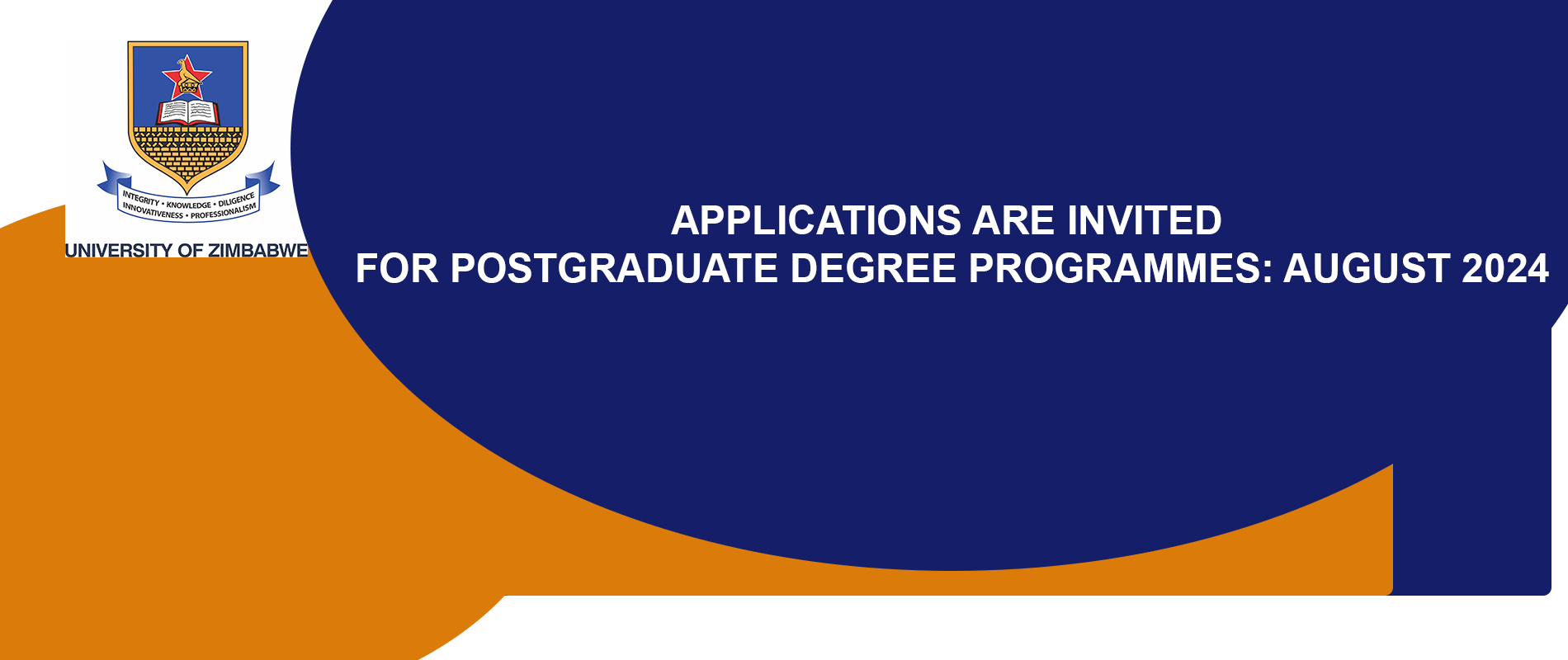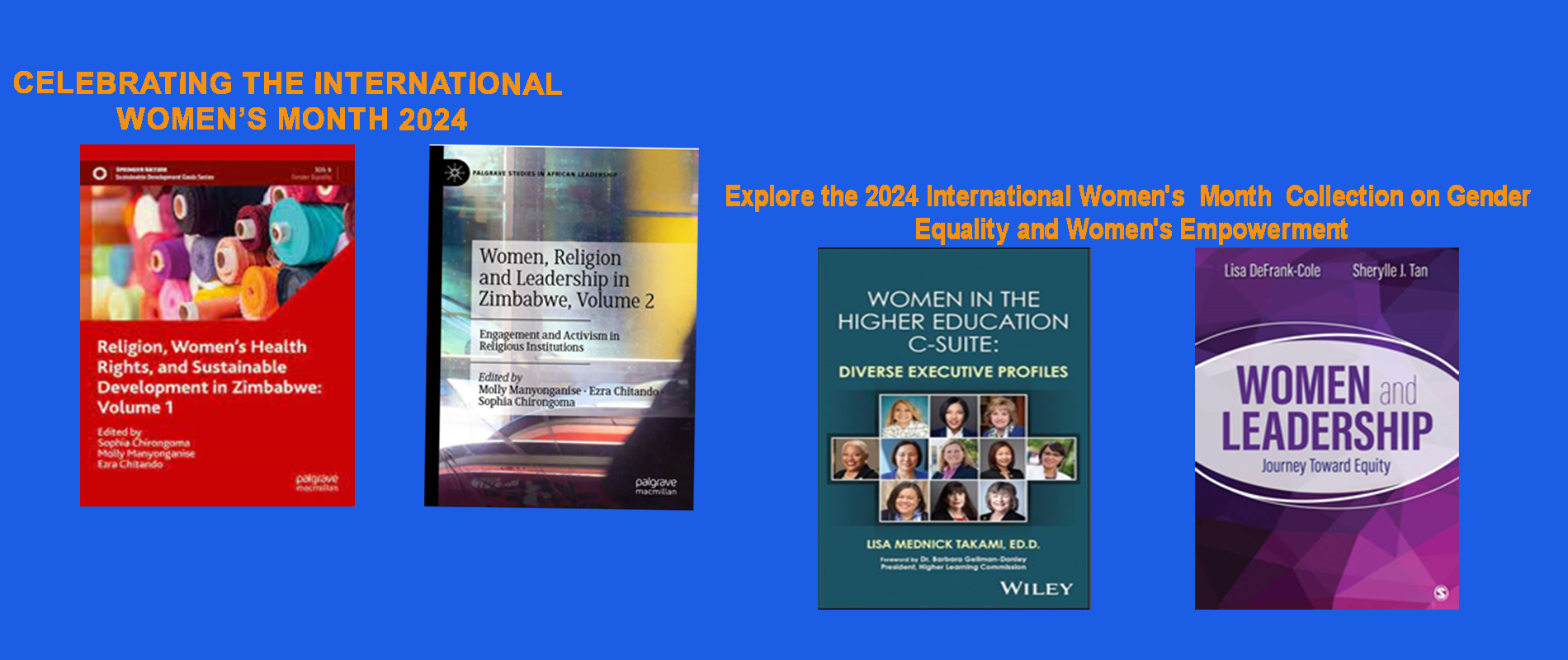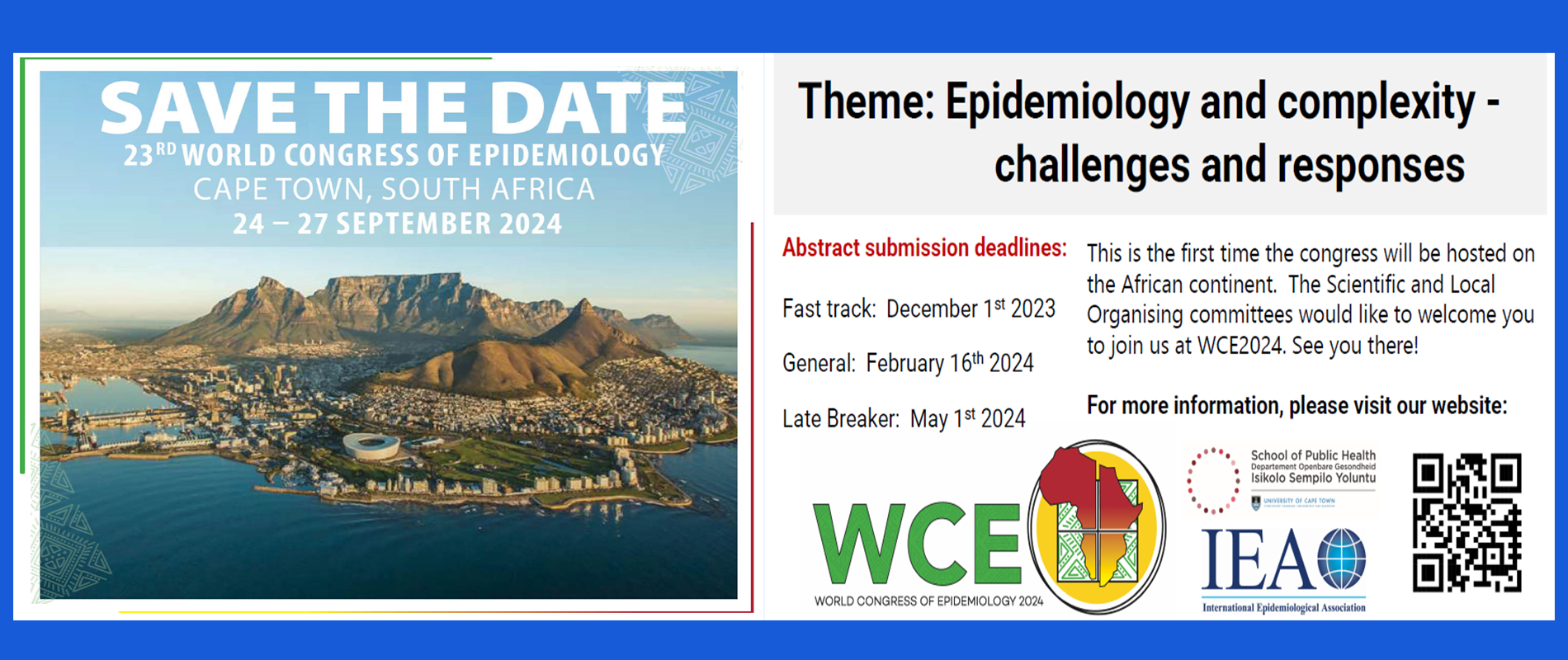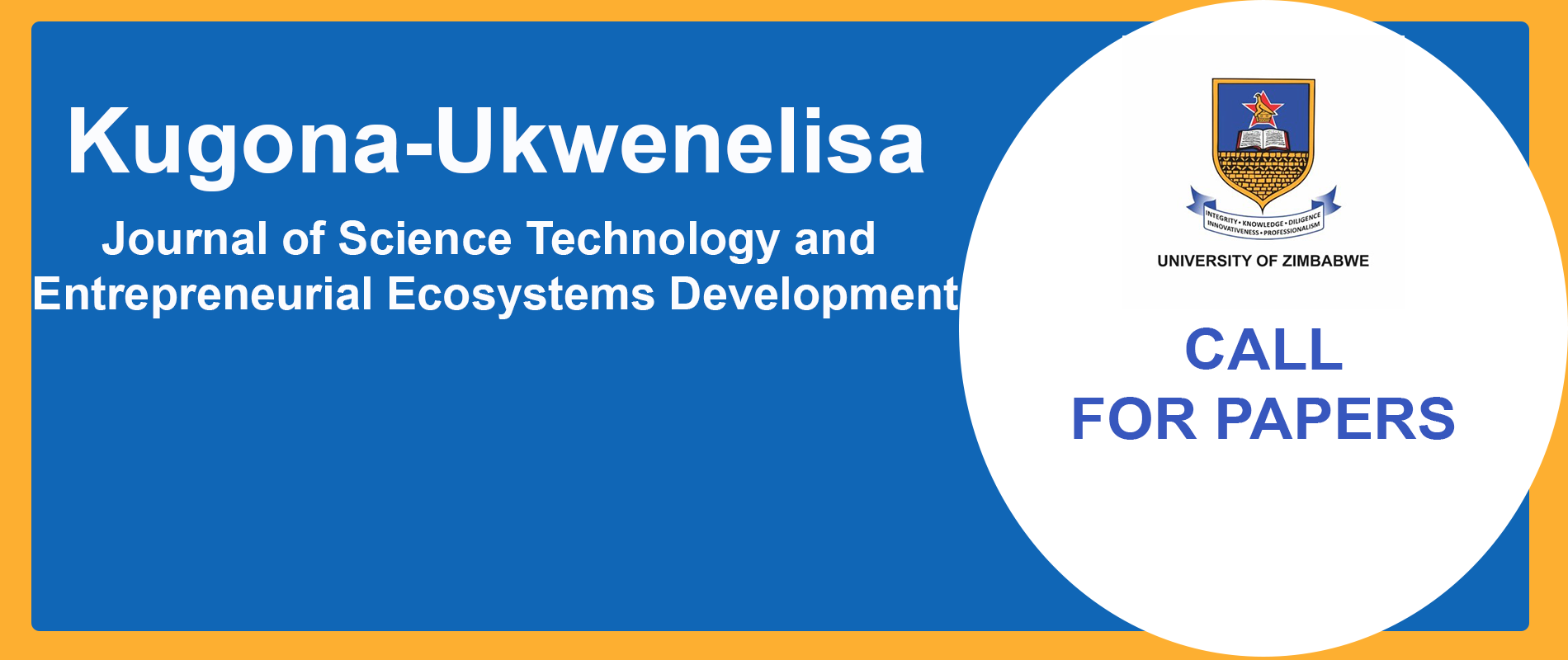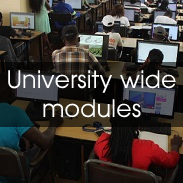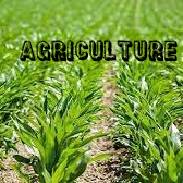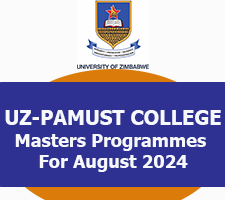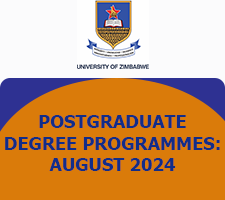Chairperson
Prof. Sheunesu Mpepereki
Ph.D. (Agriculture, Soil Science), University of Zimbabwe, M.Sc. (Agriculture – Soil Science and Microbiology), North Carolina State University, USA., B.Sc. (Botany and Chemistry), University of Sierra Leone, Certificate in Education (Secondary – Science), University of Rhodesia (Zimbabwe).
Email: This email address is being protected from spambots. You need JavaScript enabled to view it.
Telephone: 0772 220 934
Specialization: Professor Mpepereki, the Professorial Chair, Department of Soil Science and Agricultural Engineering, is one of the leading African research scientists in legume biological nitrogen fixation, rhizobium inoculant technology and soil fertility management, recognized as an expert in soyabean production, processing and marketing, recipient of several awards including the prestigious Impact Research and Science in Africa (IMPRESSA) First Prize Award in recognition of his outstanding Soyabean research and outreach, which has made significant contribution to food and income security in Zimbabwe. He has ably linked university research process to farmers, private sector, policy and other actors and used the research to train scientists for Zimbabwe, in the process publishing over 70 articles in refereed journals, books, extension manuals, newsletters, brochures and information sheets.
Publications:
- Giller, K.E., M.S. Murwira, D.K.C. Dhliwayo, P.L. Mafongoya and S. Mpepereki. 2011. Soyabeans and sustainable agriculture in Southern Africa.
- International Journal of Agricultural Sustainability, International Journal of Agricultural Sustainability,9:50-58
- Svubure, O. and S. Mpepereki. 2010. Sustainability of maize-based cropping systems in rural areas of Zimbabwe: an assessment of the residual soil fertility effects of grain legumes on maize (Zea mays [L.] under field conditions. International Journal of Engineering Science and Technology, 2: 141-148.
- Chikuvire, T J, S. Mpepereki and R. Foti. 2007. Soil fertility variability in sandy soils and implications for nutrient management by smallholder farmers in Zimbabwe. Journal of Sustainable Agriculture, 30: 69-87.
- Chikuvire, T. J, S. Mpepereki, T. A. Tigere and R. Foti. 2006. Exploiting spatial heterogeneity for food security by smallholder farmers in a semi-arid area of Zimbabwe. Journal of Sustainable Development in Africa, 8:15-29.
- Chikuvire, T. J. and S. Mpepereki. 2006. Spatial variability, perceptions, practices and implications on sustainability of soil fertility management by smallholder farmers in a semi-arid area of Zimbabwe. Journal of Sustainable Development in Africa, 8: 128-143.
- Muchaonyerwa P, T. Chevallier, P. Nyamugafata, O.L. Pantani, S. Mpepereki and C. Chenu. 2006. Adsorption of the pesticidal toxin from Bacillus thuringiensissubsp. tenebrionis on tropical soils and their particle-size fractions. Geoderma 133, 244-257.
- Zengeni, R, S. Mpepereki and K.E. Giller. 2006. Manure and soil properties affect survival and persistence of soyabean nodulating rhizobia in smallholder soils of Zimbabwe. Applied Soil Ecology 32: 232-242.
- Musiyiwa, K, S. Mpepereki and K.E. Giller. 2005. Symbiotic effectiveness and host range of indigenous rhizobia nodulating promiscuous soyabean varieties in Zimbabwean soils. Soil Biology and Biochemistry 37: 1169-1176.
- Musiyiwa, K, S. Mpepereki and K.E. Giller. 2005. Physiological diversity of rhizobia nodulating promiscuous soyabean in Zimbabwean soils. Symbiosis 40: 97-107
- Muchaonyerwa P, S. Waladde, P. Nyamugafata, S. Mpepereki and G.G. Ristori. 2004. Persistence and impact, on microorganisms, of Bacillus thuringiensis proteins in some Zimbabwean soils. Plant and Soil 26: 41-46.
- Musiyiwa K., S. Mpepereki and K.E. Giller. 2001. Promiscuous soyabean rhizobia prevalence and symbiotic effectiveness in some Zimbabwean soils. African Crop Science Conference Proceedings, 5: 841-846.
- Mpepereki, S. 2001. Soybean N2 fixation: a conceptual model for maximizing benefits from research and extension for smallholder farmers. African Crop Science Conference Proceedings 5: 861-865.
- Mapfumo, P, BM Campbell, S Mpepereki and PL Mafongoya. 2001.Legumes in soil fertility management: the case of pigeon pea in smallholder farming systems in Zimbabwe. African Crop Science Journal 9: 629-644. (ISSN1021-9730/2001)
- Muchaonyerwa P, T Chevallier, P Nyamugafata, OL Pantani, S Mpepereki and C Chenu. 2006. Adsorption of the pesticidal toxin from Bacillus thuringiensis subsp.tenebrionis on tropical soils and their particle-size fractions. Geoderma 133, 244-257. [Impact factor 2.859]
- Mapfumo, P, S Mpepereki and PL Mafongoya. 2000. Pigeonea rhizobia prevalence and crop response to inoculation in Zimbabwean smallholder-managed soils.Experimental Agriculture .
- Mpepereki, S, F Javaheri, P Davis and K.E. Giller. 2000. Soybeans and sustainable agriculture: Promiscuous soyabeans in Southern Africa. Field Crops Research, 65: 137-149.
- Svubure, O, S Mpepereki, and F Makonese. 2000. Legume production and farmer awareness of biological nitrogen fixation (BNF) technologies in communal areas of Zimbabwe. Biotechnology 4 (5): 3-9.
asasa, P, S Mpepereki, K.E. Giller, K Musiyiwa, F. Makonese and I. Pompi. 1999. Residual N benefits of promiscuous soyabeans to maize under field conditions.African Crop Science Journal 7: 425-432. ISSN 1021-9730/99. - Makonese, F S, Mpepereki and P Mafongoya. 1999. Vesicular arbuscular mycorrhizal fungi prevalence and diversity in Zimbabwean soils. Journal of Applied Science in Southern Africa 5: 32-42.
- Mapfumo, P, KE Giller, S Mpepereki and PL Mafongoya. 1999. Dinitrogen fixation by pigeon pea of different maturity types on granitic sandy soils in Zimbabwe.Symbiosis 27: 305-318.
- Mapfumo, P, P Mafongoya and S Mpepereki. 1998. Opportunities for the introduction of pigeon peas into smallholder farming systems in Zimbabwe. Transactions of the Zimbabwe Scientific Association, 72 (Supplement), 60-65. ISSN 0254 2765.
- Mpepereki, S, F Makonese and KE Giller. 1998. Promiscuous nodulation of soybean (Glycine max L. Merrill): potential in small scale cropping systems in Zimbabwe. Agronomie Africaine Numero Special 1: 113-122.
- Mpepereki, S, AG Wollum and F Makonese. 1997. Physiological characterization of indigenous rhizobia nodulation Vigna unguiculata in Zimbabwean soils.Symbiosis 22: 275-292.
- Mafongoya, PL, S Mpepereki, BH Dzowela, E Mangwayana and F Makonese. 1997. Effect of pruning quality and the method of pruning placement on soil microbial composition. African Crop Science Conference Proceedings 3:14-19.
- Mpepereki, S, AG Wollum and F Makonese. 1996. Diversity in symbiotic specificity of cowpea rhizobia from Zimbabwean soils. Plant and Soil 186:167-171.
- Mpepereki, S, AG Wollum and F Makonese. 1996. Growth temperature characteristics of indigenous Rhizobium and Bradyrhizobium isolates from Zimbabwean soils. Soil Biology and Biochemistry 28:1537-1539.
- Davis, P, and S Mpepereki, 1995. Symbiotic and serological characteristics of indigenous soybean rhizobia. Zimbabwe Journal of Agricultural Research 33: 103-115.
- Mpepereki, S and F Makonese. 1995. Prevalence of cowpea and soyabean rhizobia in field soils of Zimbabwe. Zimbabwe Journal of Agricultural Research 33: 191-205.
- Mpepereki, S and AG Wollum. 1991. Diversity in indigenous Bradyrhizobium japonicum in North Carolina soils. Biology and Fertility of Soils 11: 121-127.
- Mpepereki, S. 2010. Technology adoption by smallholder farmers: lessons from the soyabean research/promotion program in Zimbabwe. In: Proceedings of the Second Biennial Conference of Regional Universities Forum, 20-24 September, 2010. Entebbe, Uganda.
- Mafongoya, PL, S Mpepereki and S Mudyazhezha. 2009. The importance of Biological Nitrogen Fixation in Cropping Systems in Non-industrialized Nations. pp 329-348. In: Emerich, DW and HB Krishnan (eds.). Nitrogen Fixation in Crop Production. ASA, CSSA and SSSA. Madisoon, Wisconsin. pp
- Muchaonyerwa P., C Chenu, OL Pantani, L Calamai, P Nyamugafata and S Mpepereki. 2002. Adsorption of the insecticidal toxin from Bacillus thuringiensissubspecies tenebrionis to clay fractions of tropical soils. pp 59-68. In: Violante, A, PM Huang, LM Bollag and L Gianfreda (eds.). Developments in Soil Science, Vol 28B. Elsevier, Amsterdam.
- Mpepereki S, F Makonese and KE Giller. 2001. Soyabean N2 fixation and food security for smallholder farmers: a research extension model for sub-Saharan Africa. pp 346-351. In: TM Finan, MR O’Brian, DB Layzell, JK Vessey and W Newton. (eds). Nitrogen Fixation for Sustainable Agriculture. CABI Publishing, Wallingford.
- Muchaonyerwa, P, C. Chenu, OL Pantani, L Calamai., P Nyamugafata and S Mpepereki. 2001. Adsorption of the insecticidal toxin from Bacillus thuringiensissubspecies tenebrionis to clay fractions of tropical soils. Proceedings of the ISMOM 2000. Soil Mineral - Organic Matter – Micro-organisms Interactions in Ecosystem Health, International Conference, Naples, 22 - 26 May 2000.Elsevier Publishers.
- Giller, KE, and S Mpepereki, P Mapfumo, P, Kasasa, WS Sakala, H Phombeya, O Itimu G Cadisch, RA Gilbert, and SR Waddington. 2000. Putting legume nitrogen fixation to work in cropping systems of Southern Africa. pp 525-530. In: Pedrosa, F, M Hungaria, MG Yates and WE Newton. (eds). Nitrogen Fixation: from molecules to crop productivity. Kluwer Academic Publishesrs, Dordrecht. ISBN: 0-79236233-0.
- Mpepereki, S., P. Kasasa, K Musiyiwa, F. Makonese, K E Giller and I. Pompi. 2000. Impact of soyabean on the rural poor: experiences from Zimbabwe. p 556. In:Pedrosa, F, M Hungaria, MG Yates and WE Newton. (eds.) Nitrogen Fixation: from molecules to crop productivity. Kluwer Academic Publishers, Dordrecht. ISBN: 0-79236233-0
- Rusike, J., C. Sukume, A. Dorward, S. Mpepereki and K E Giller. 2000. The Economic Potential of Soyabean Production in Zimbabwe. Soil Fert. Net Special Publication. Harare, Zimbabwe. 64 pp.
- Nzuma, K K., S. Mpepereki and H K Murwira. 1999. Using participatory methods to develop manure options: a case study in Mangwende communal area, Zimbabwe. pp 25-31. In: CIMMYT. 1999. Risk management for maize farmers in drought prone areas of southern Africa. CIMMYT/ICRISA/DANIDA Mexico. ISBN 970-648-009-9.
- Mpepereki, S and F Makonese. 1998. Seasonal rhizobial population fluctuations under field conditions in Zimbabwean soils. pp 109-115. In: Mpepereki, S. and F. Makonese (eds). Harnessing Biological Nitrogen Fixation in African Agriculture: challenges and opportunities. University of Zimbabwe Publications, Harare. (ISBN 0-908307-58-6)
- Mpepereki, S, and F Makonese. 1998. Biological Nitrogen Fixation: sustaining African agriculture into the 21st century? pp 257-258. In: Mpepereki, S. and F. Makonese (eds). Harnessing Biological Nitrogen Fixation in African Agriculture: challenges and opportunities. (ISBN 0-908307-58-6)
- Mapfumo, P, S Mpepereki and PL Mafongoya. 1998. Pigeon pea in Zimbabwe: a new crop with potential. pp 93-98. In: Waddington, S, H Murwira., J Kumwenda, D Hikwa and F Tagwira (eds). Soil Fertility Research for Maize-based Farming Systems in Malawi and Zimbabwe. CIMMYT, Harare. ISBN 970-648-006-4.
- Nzuma, JK, S Mpepereki and HK Murwira. 1998. Cattle manure management options for reducing nutrient losses: farmer perceptions and solutions in Mangwende, Zimbabwe. pp 183-190. In: Waddington, S, H Murwira., J Kumwenda, D Hikwa and F Tagwira (eds). Soil Fertility Research for Maize-based Farming Systems in Malawi and Zimbabwe. CIMMYT, Harare. ISBN 970-648-006-4.
- Kasasa, P, S Mpepereki and K E Giller. 1998. Nodulation and yield of promiscuous soybean (Glycine max [L.] Merr.) varieties under field conditions. pp 99-103. In:Waddington, S, H Murwira., J Kumwenda, D Hikwa and F Tagwira (eds). Soil Fertility Research for Maize-based Farming Systems in Malawi and Zimbabwe.CIMMYT, Harare. ISBN 970-648-006-4.
- Pompi, I, S Mpepereki and E Gwata. 1998. Zimbabwe Soyabean Promotion Task Force: objectives, achievements and agenda for the future. pp 271-273. In:Waddington, S, H Murwira., J Kumwenda, D Hikwa and F Tagwira (eds). Soil Fertility Research for Maize-based Farming Systems in Malawi and Zimbabwe.CIMMYT, Harare. ISBN 970-648-006-4.
- Mpepereki, S, AG Wollum and F Makonese. 1998. Host range and competitiveness of soyabean-nodulating rhizobia indigenous to Zimbabwean soils. p 646. In: C Elmerich, A Kondorosi and WE Newton. (eds). Biological Nitrogen Fixation for the 21st century. Kluwer Academic Publishers. Dordrecht, Netherlands. ISBN 0-7923-4834-6
- Makonese, FT, S Mpepereki, P Kasasa and P Mafongoya. 1998. Response of soyabean (Glycine max) to co-inoculation with rhizobia and mycorrhizae. p 633. In: C. Elmerich, A Kondorosi and W.E. Newton. (eds). Biological Nitrogen Fixation for the 21st century. Kluwer Academic Publishers. Dordrecht, Netherlands. ISBN 0-7923-4834-6.
- Giller, KE, F Javheri, B Mwakalombe, P Davis and S Mpepereki. 1998. Soyabeans and sustainable agriculture: 'promiscuous' soyabeans in southern Africa. pp 625-626. In: C Elmerich, A Kondorosi and WE Newton. (eds). Biological Nitrogen Fixation for the 21st century. Kluwer Academic Publishers. Dordrecht, Netherlands. ISBN 0-7923-4834-6.
- Mpepereki, S., AG Wollum and F Makonese. 1997. Diversity in symbiotic specificity of cowpea rhizobia from Zimbabwean soils. In: GH Elkan and R G Upchurch (eds). Current Issues in Symbiotic Nitrogen Fixation. Kluwer Academic Publishers. Dordrecht/Boston/London. ISBN 0-7923-4367-0
- Giller, KE and S Mpepereki. 1996. Potential contributions from naturally-nodulating soybean to residual soil fertility in maize-based cropping systems. pp 74-76. In:Mpepereki, S, KE Giller and F Makonese. (eds). Soybeans in Smallholder Cropping Systems of Zimbabwe: potential contributions from biological nitrogen fixation. University of Zimbabwe with Soil Fert Net, Harare. pp
- Mpepereki, S and F Makonese. 1996. Exploiting promiscuous nodulation as a vehicle for integrating soybean (Glycine max L. Merrill) into smallholder cropping systems in Zimbabwe. pp 77-84. In:
- Mpepereki, S, KE Giller and F Makonese. (eds). Soybeans in Smallholder Cropping Systems of Zimbabwe: potential contributions from biological nitrogen fixation. University of Zimbabwe with Soil Fert Net, Harare.
- Mpepereki, S, AG Wollum, and WE Kloos. 1994. DNA-DNA hybridization, serology and protein electrophoresis studies of rhizobia from Zimbabwean soils. pp 385-386. In: Hegazi, NA, M. Fayez and M. Monib. (eds). Nitrogen Fixation in Non-legumes. American University in Cairo Press, Cairo. ISBN 977 424 355 2.
- Mpepereki, S, and F Makonese. 1994. Inoculation response of cowpea (V. unguiculata), soybean (G. max) and dry beans (P. vulgaris) in soils with low populations of rhizobia. pp 32-44. In: Hilali, A., and M. Sadiki (eds). Recent Developments in Rhizobium Research in Africa. Hassan V Institute, Rabat, Morocco. ISBN 9981-9842-0-5.
- Kasasa P, S Mpepereki and K E Giller. 1998. Residual nitrogen benefits of promiscuous soyabeans to maize (Zea mays L.) under field conditions. p103. In: FD Dakora (ed). Proceedings of the Eighth Congress of the African Association for Biological Nitrogen Fixation. African Association for Biological Nitrogen Fixation (AABNF). University of Cape Town and Agricultural Research Council, Pretoria, South Africa.
- Mapfumo, P, KE Giller, S Mpepereki and P Mafongoya. 1998. Dinitrogen fixation by pigeonpea of different maturity types on granitic sandy soils in Zimbabwe. p126-128. In: FD Dakora (ed). Proceedings of the Eighth Congress of the African Association for Biological Nitrogen Fixation. African Association for Biological Nitrogen Fixation (AABNF). University of Cape Town and Agricultural Research Council, Pretoria, South Africa.
- Musiyiwa, K, S Mpepereki and K E Giller. 1998. Promiscuous soyabean: free nitrogen without rhizobial inoculation for smallholder farmers. pp 151-152. In: FD Dakora (ed). Proceedings of the Eighth Congress of the African Association for Biological Nitrogen Fixation. African Association for Biological Nitrogen Fixation (AABNF). University of Cape Town and Agricultural Research Council, Pretoria, South Africa.
- Musiyiwa K., S. Mpepereki and K.E. Giller. 2004. Symbiotic effectiveness and host ranges of Indigenous rhizobia nodulating two promiscuous soyabean in some Zimbabwean soils. The 4th International Symposium of the Working Group “Interactions of Soil Minerals with Organic Components and Microorganism” and the First Inter-Congress Conference of Commission 2.5 “Soil Physical/Chemical/Biological Interfacial Interactions” of the International Union of Soil Sciences, Sept. 20-23, 2004. Wuhan, China.

